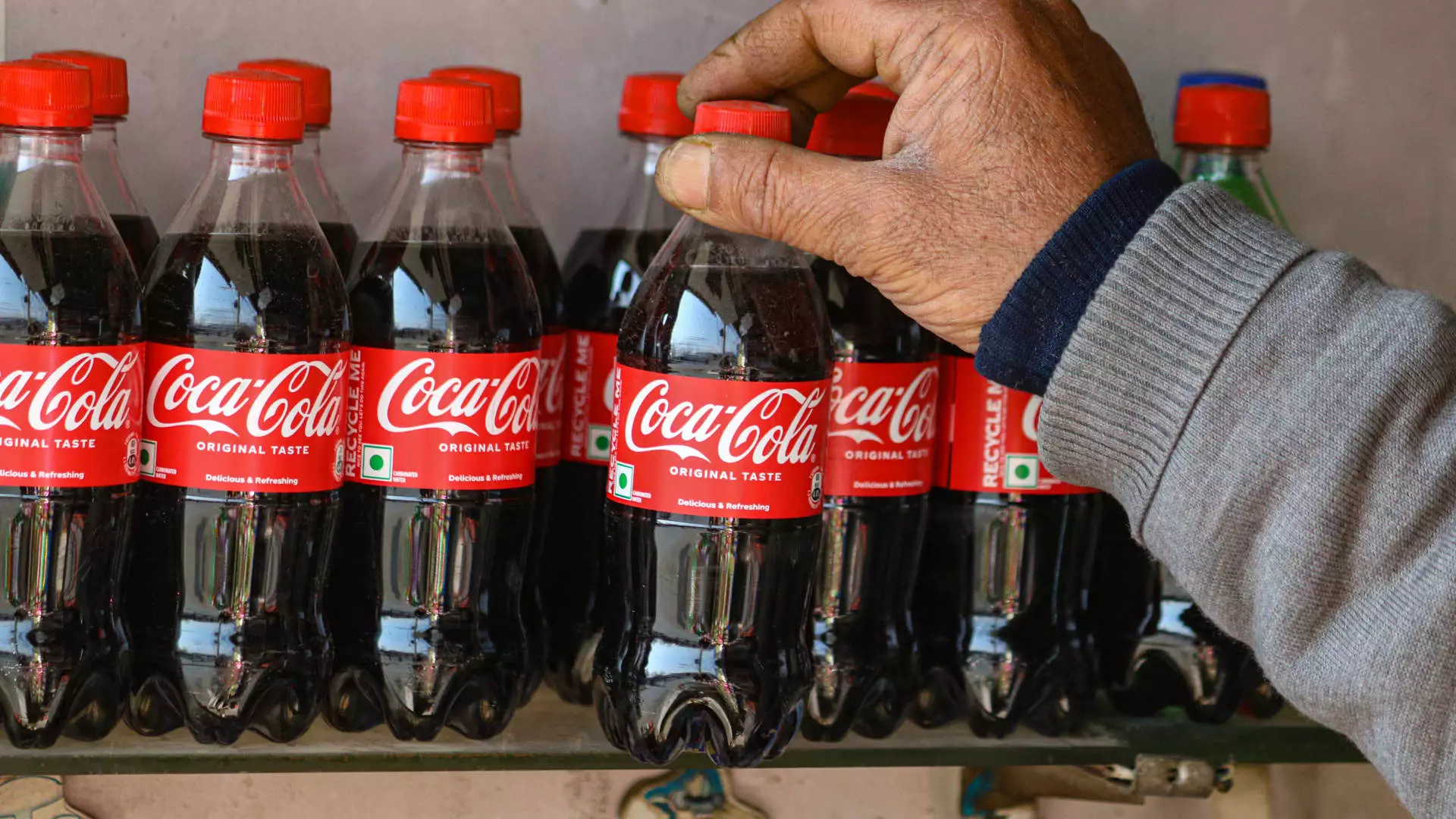In a landscape characterized by a series of evolving economic policies, the beverage industry, particularly giants like Coca-Cola, faces significant strategic decisions in response to the shifting tariff structures instituted by the Trump administration. As President Trump’s administration announced a substantial increase in tariffs on aluminum imports—from a previous rate of 10% to a staggering 25%—Coca-Cola’s CEO, James Quincey, voiced his concerns and outlined potential responses during a recent earnings call. This change in tariffs is primarily aimed at curbing foreign competition, particularly from countries like China, despite the fact that the U.S. imports only a fraction of its aluminum from there.
Quincey underscored that in light of the rising costs associated with aluminum, Coca-Cola is prepared to pivot towards increased usage of plastic bottles. Such a strategy highlights the company’s agile approach to managing affordability and consumer preferences, revealing that their commitment to maintaining market competitiveness remains intact, even with fluctuating material costs.
Though Quincey attempted to downplay the potential financial impact of the newly instituted tariffs, it’s crucial to examine both the immediate and long-term implications on Coca-Cola’s operational costs. His assertion that the rise in aluminum pricing would not “radically change” the business emphasizes an aspect of corporate communication often overlooked—investor reassurance. However, while it can be true that packaging constitutes only a fragment of Coca-Cola’s expansive cost structure, shifts in material choices can undeniably influence brand sentiment and consumer behavior.
When discussing aluminum, Quincey highlighted the possibility of sourcing from domestic suppliers in response to tariffs. Although this could mitigate some of the cost concerns, it also introduces the complexities of supply chain logistics and potential changes in quality or pricing that might not align with Coca-Cola’s established product standards.
The pivot to plastic, specifically polyethylene terephthalate (PET), raises pivotal questions about environmental responsibility. While Coca-Cola’s move towards more plastic packaging may theoretically alleviate some immediate financial pressures from aluminum tariffs, the ecological implications cannot be overlooked. Plastic is notorious for its lower recycling rates; for instance, data from the Environmental Protection Agency indicates that in 2018, only 29.1% of PET was recycled compared to 50.4% of aluminum. This disparity poses a challenge for Coca-Cola, which has faced increasing scrutiny for its reliance on single-use plastic and has earned the undesirable title of the world’s worst polluter by Greenpeace for six consecutive years.
The choice between aluminum and plastic, therefore, becomes not just an economic decision but an ethical one as well. With mounting pressure from environmental advocates and consumers who are increasingly aware of sustainability issues, Coca-Cola’s strategy could face backlash as it continues to utilize plastic amidst a growing demand for sustainable practices.
Adding to Coca-Cola’s sustainability conundrum are recent changes to its environmental goals. Initially aiming for 50% of its packaging materials to be recycled by 2030, the company has since scaled back its target to 35%-40% by 2035. This adjustment signals a concerning trend where corporate sustainability commitments might be compromised under economic pressures, inviting criticism from environmental organizations and stakeholders alike.
Furthermore, while the company highlights its goal of collecting 70%-75% of the equivalent number of items introduced annually, this raises legitimate questions about the effectiveness of those targets. The reality of achieving such ambitious goals in parallel with ramping up plastic production introduces a conflicting narrative difficult to reconcile.
As Coca-Cola navigates the evolving terrain shaped by new tariffs and market conditions, the company’s decision to shift packaging strategies reflects a complex balance of financial viability and consumer expectations. Relocating to plastic bottles may offer short-term cost efficiencies; however, it lays bare a larger conversation regarding corporate responsibility and environmental stewardship. The beverage giant stands at a pivotal crossroads, where the choices it makes now will significantly impact its brand reputation and public perception in an era increasingly defined by environmental accountability. As stakeholders monitor these developments, the challenge remains: how can Coca-Cola maintain its competitive edge while also championing sustainable practices in an ever-changing economic environment?

